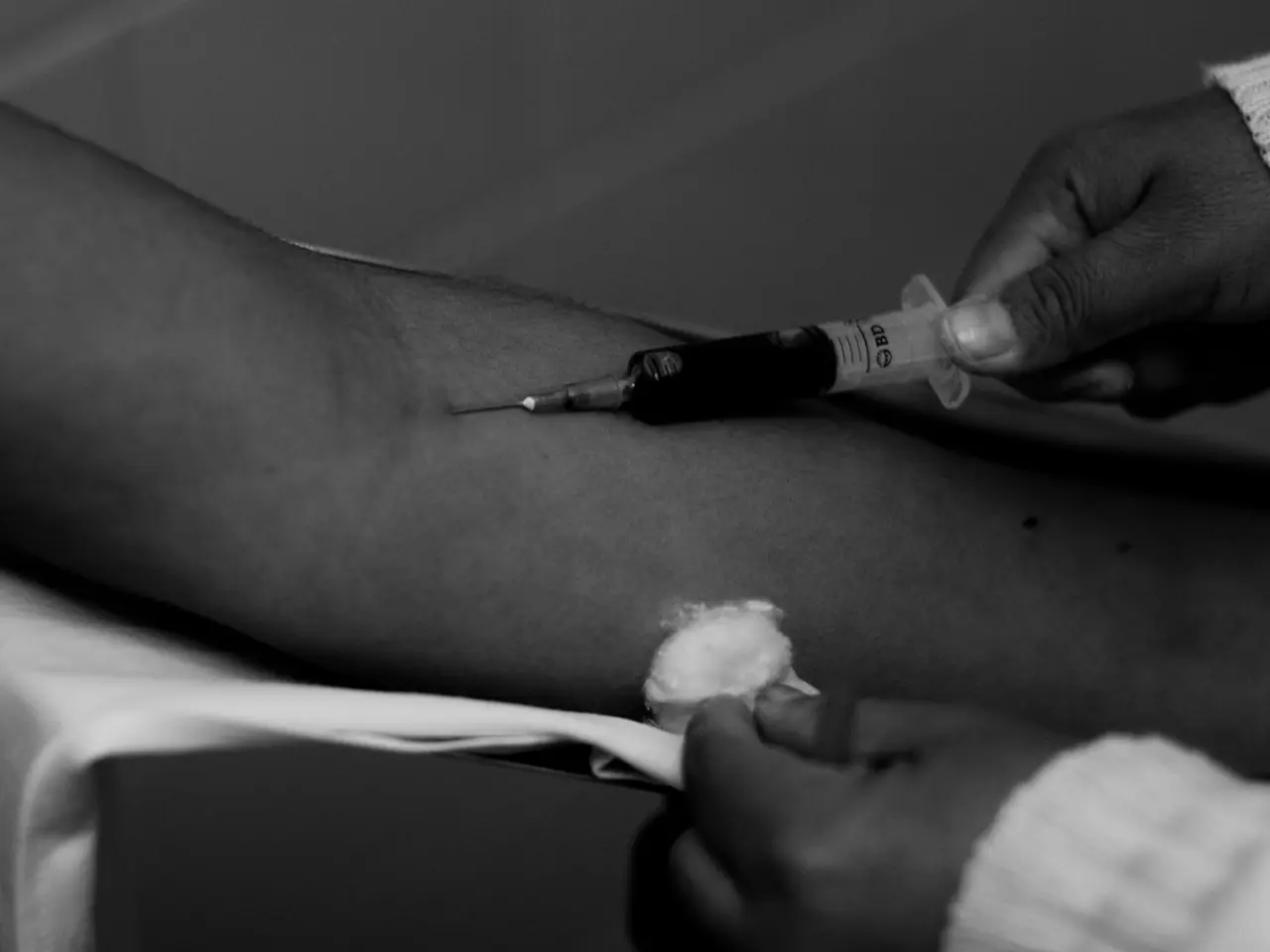Immunotherapy through allergy shots: Efficiency, adverse reactions, and categories explained
Allergy shots, also known as allergen immunotherapy, have proven to be a highly effective long-term solution for many allergy sufferers. This form of treatment involves the administration of small doses of allergens to stimulate the immune system and reduce allergy symptoms.
A newer form of immunotherapy, sublingual immunotherapy (SLIT), is also gaining popularity. Instead of the allergen being injected under the skin, it is administered as a tablet or a drop under the tongue.
Allergy shots have been shown to reduce allergy symptoms in approximately 70–80% of patients when administered correctly over a typical course of several years. Sublingual immunotherapy, while not precisely the same, has demonstrated a 40–60% reduction in allergy symptoms when taken consistently for three or more years.
The effectiveness of allergy shots can depend on several factors, including consistency and duration of treatment, the patient’s specific allergens, individual immune response, timing of treatment initiation, proper diagnosis and management, adherence to the treatment plan, changes in allergic sensitivities, underlying biology, and individual responses to the treatment.
Understanding these variables can help both clinicians and patients set realistic expectations and optimize outcomes. For instance, immunotherapy generally requires a long-term commitment, with the full benefit usually seen after three to five years of regular administration. The effectiveness can also depend on the type and number of allergens triggering the symptoms, with some allergens being more responsive to immunotherapy than others.
The cost of allergy shots can vary considerably, and it is worth contacting the insurance provider to determine the benefits they have. Side effects of allergy shots primarily include redness or swelling at the injection site, and in some cases, increased allergy symptoms such as sneezing, watery eyes, nasal congestion, hives, and rashes.
Allergy shots are given in a series of injections, starting with a small amount of the allergen and gradually increasing the dosage. It is crucial to adhere to the treatment plan to ensure its success. Missing doses or discontinuing treatment prematurely can reduce the effectiveness of allergy shots.
Allergy shots are a long-term treatment for allergies and can provide lasting relief once treatment has finished. They are effective in the treatment of allergic asthma and can relieve allergic reactions that lead to asthma episodes. In rare instances, a person can have a serious reaction to an allergy shot, such as anaphylaxis, which requires emergency medical attention.
Anaphylactic shock is a severe and life-threatening allergic reaction known as anaphylaxis, and allergens most frequently associated with anaphylaxis include food, insect stings, medication, and latex. It is essential to be aware of the symptoms of anaphylaxis, which include swollen throat, wheezing, tightness in the chest, nausea, dizziness, and more.
Allergy shots have traditionally been the most common form of immunotherapy, known as subcutaneous immunotherapy (SCIT), where an allergen is injected under the skin. SLIT treatments are limited to one type of allergen, but most people with allergies will have more than one. In contrast, allergy shots can give relief to more than one type of allergy at the same time.
Allergy shots have been used for more than 100 years, demonstrating their long-term effectiveness. In the maintenance phase, injections are given every 2 weeks, then every 4 weeks, and the treatment usually lasts for between 3 and 5 years.
In conclusion, allergy shots are a highly effective long-term solution for many allergy sufferers, but their success depends greatly on patient-specific factors and adherence to treatment. Understanding these variables can help both clinicians and patients set realistic expectations and optimize outcomes.
Allergy shots are effective in reducing symptoms for approximately 70-80% of patients over several years, with the full benefit typically seen after three to five years. Sublingual immunotherapy can provide a 40-60% reduction in symptoms after consistent use for three or more years. Both forms of immunotherapy, allergy shots and SLIT, require a long-term commitment and adherence to treatment plans for best results.
Thesuccess of allergy shots depends on several factors, including the patient's specific allergens, responses to treatment, and management. Since allergy shots can provide relief from multiple allergies simultaneously, they are often a preferable option for those with multiple allergies.
However, it's important to note that allergy shots can have side effects, mainly redness or swelling at the injection site, and in some cases, increased allergy symptoms. In rare instances, a serious allergic reaction called anaphylaxis can occur, which requires immediate medical attention. Allergens commonly associated with anaphylaxis include food, insect stings, medication, and latex.
Being aware of symptoms of anaphylaxis, such as swollen throat, wheezing, and dizziness, can help manage the risk. Allergy shots have been shown to be effective for more than 100 years, making them a well-established treatment for allergies associated with chronic diseases, mental health, and health and wellness.
Modern treatments and therapies, including fitness and exercise, skin care, nutrition, and CBD, can complement allergen immunotherapy for a holistic approach to health and wellness. By understanding the variables that affect treatment outcomes, both clinicians and patients can work together to optimize results, ensuring the best possible health and wellness outcomes.




